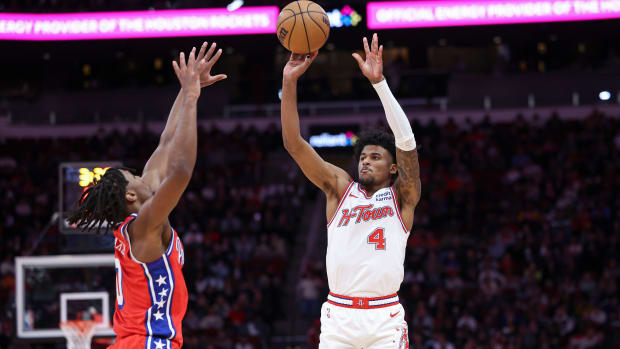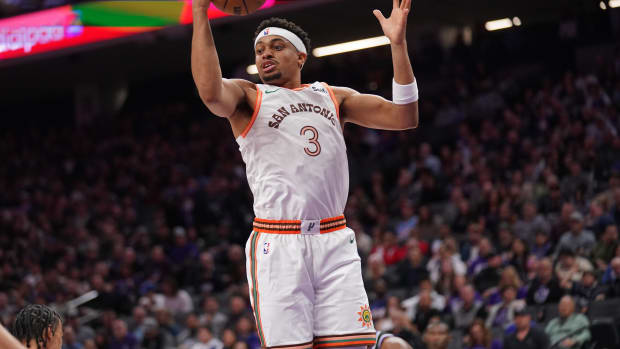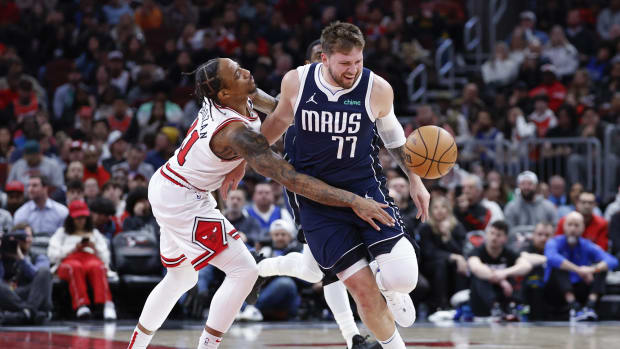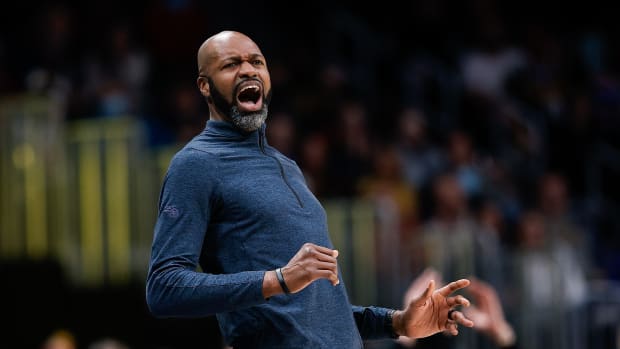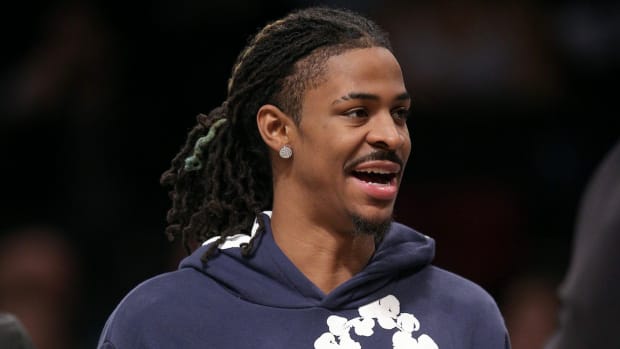What's Next for the Spurs After Trading Kawhi Leonard?
The San Antonio Spurs agreed to send Kawhi Leonard to the Toronto Raptors overnight Tuesday, and attrition is still undefeated. The situational confluence of time, money and self-interest remains the NBA’s great change agent. There’s no reminder quite like star players changing sides, with DeMar DeRozan, a player once thought to be similarly entrenched, headed the other way. The last couple months of Leonard rumors softened the surprise of the blow, to be sure. Yet it’s still peculiar on some level to comprehend that not even the Spurs, in many ways a model franchise, are bulletproof.
It’s challenging enough to build a team of substance in any professional sport, which makes sustaining one something of a grail unto itself. All winning formulas eventually command change. Course-adjusting through a sense of stagnancy became a reasonable off-season prerogative for Toronto’s front office. Gambling on a Finals run and a yearlong pitch to Leonard is easy to understand, and the optics of losing Jakob Poeltl and a favorably protected first-rounder while bringing in a second rotation player in Danny Green aren’t all that bad. The franchise’s reputation and long run of success makes reckoning with the aftermath a bit tougher on San Antonio’s end, during a summer that has seen Tony Parker depart, and with Manu Ginobili’s retirement up in the air.
Trade Grades: Kawhi Leonard Dealt to Raptors for DeMar DeRozan in Summer Blockbuster
The last two decades of Spurs basketball were characterized by a rare unselfishness that permeated style of play as well as the locker room. Watching an increasingly disgruntled Leonard force his own team’s hand was unusual and unexpected. He was thought to be the franchise’s post-Tim Duncan torchbearer, bursting onto the scene in the 2014 Finals, painted as a no-frills silent killer. Though never good for a quote, Leonard’s straight-faced approach always proved a compelling foil for the NBA’s stable of high-scoring, flashy superstars. He’s coming off of injury, and who knows what Toronto will get at this point. But at his best, Leonard remains a shutdown corner, the rare defensive-minded franchise player who rejects his own celebrity, perhaps more of a ‘unicorn’ than any other talent in the league.
From the outside looking in, this is tough to swallow given how neatly the workmanlike aesthetic of Leonard’s game always appeared to fit with the Spurs’ ethos. In engineering his own departure, Leonard managed to unravel his own mystique as well as that of his his now-former franchise. Ongoing reports of his unhappiness wound up taking a petulant tone, right up to the buzzer at 4:35 a.m. Eastern Time Wednesday: Kawhi Leonard has no desire to play in Toronto. Regardless of who in Leonard’s camp is executing the plays, he is responsible for a saga that has pulled back the curtain on his own motives, as well as making it abundantly clear that the Spurs’ much-discussed culture—an entity unto itself—is not a catch-all. This particular sort of misfortune will have rival teams privately smirking.
In any case, the Spurs are moving on. The pathos of this divorce will have to be back-burnered. The take from this deal isn’t a king’s ransom, but DeRozan will help keep them competitive. Dealing an unhappy, self-motivated Leonard who took steps to separate himself from the organization’s values keeps this from becoming a total identity crisis. As long as Gregg Popovich is coaching the team, San Antonio will be able to earnestly sell the strength of its own foundation. They will likely avoid a full-on roster shuffle, at least through 2021, with LaMarcus Aldridge under contract and DeRozan holding a player option for that year. They will hoist a cavalcade of mid-range jumpers and hope to overachieve.
The Raptors Lived Long Enough to Become the Villains
The final off-season domino is the fate of Ginobili, who remains a joy to watch at 40 years old but can only feature in spot minutes. In any case, consider this a true changing of the guard in San Antonio, where Ginobili and Mills are now the final vestiges of the 2014 title team that beat the odds, knocked off LeBron and solidified Leonard as a force. It may not be long before the discussion shifts to Popovich, who will turn 70 during the season. He has committed to coaching the U.S. national team through the 2020 Olympic cycle, which could lead to an awkward reunion with his former star. But if the Spurs’ situation goes belly-up over the next couple of years and points to a complete rebuild, it may test his patience.
Thinking short-term, losing Leonard means no assurance of a clean pathway back to the playoffs. With LeBron inbound to Los Angeles, only two teams, the Suns and the Kings, can be confidently expected to lose a lot of games. The Spurs will likely roll out a capable but unflashy starting five of Dejounte Murray, DeRozan, Rudy Gay, Aldridge and Pau Gasol. Patty Mills returns to anchor the bench, second-year guard Derrick White might be poised to break out, and the free-agent additions of Marco Belinelli and Dante Cunningham will create some stability. Poeltl is a capable young backup who had some good moments for the Raptors. Rookie shooting guard Lonnie Walker is a promising talent, but will need seasoning and is likely at least a year away from any substantial contributions.
None of this is to say the Spurs won’t be highly competitive—they’ll fight it out, and should have enough for a 22nd consecutive playoff berth. But if the Leonard trade (or really, history at large) is any indicator, nothing great ever ends the way we want it to, or think it will. There is some young talent here, and plenty of time to spin things forward and reframe the roster while staying relevant. At any rate, San Antonio’s future is far less certain than anyone ever expected. However it breaks, the Leonard trade will stand as an inflection point, and a reminder that not even the strongest foundation is permanent.































